Kurnool-Cuddapah canal (KC Canal) off-takes from Sunkesula anicut on Tungabhadra River, traverses through Kurnool and Kadapa (Cuddapah) districts and finally terminates at Cuddapah. This canal is connected to the natural streams Nippulavagu, Galeru and Kunderu through controlling structures on these streams viz. Lock-In-Sula, Santajutur anicut and Rajoli anicut respectively.
As a result, the nearby areas of these streams are benefited by this project. The total ayacut registered originally under this canal is 122200 ha which is reduced to 110482 ha due to foreshore submergence of Srisailam and urban agglomeration. Out of 110482 ha, Kurnool and Cuddapah districts are having ayacut of 75879 ha and 34603 ha respectively.
History:

This project owed its inception to the policy inaugurated in the middle of the 19th century of introducing into India Cuddapah. British capital and enterprise in the construction of irrigation works. The canal forms only a section of the original ambitious design undertaken by the Madras Irrigation and Canal Company which was incorporated in 1858. The capital of the company was to be £l,000,000 on which Government guaranteed 5 per cent, interest- The Madras Government was not in favour of the work being undertaken by a private company, but the Government of India was desirous of attracting private capital to such enterprises and the highly successful results of irrigation work in the delta tracts as well as the views held by the late Sir Arthur Cotton and other irrigation experts contributed to the decision of the Secretary of State to accept the company’s proposals.
The canal takes off from an anicut, seventeen miles above the town of Kurnool, on the river Tungabhadra, which skirts the district of Bellary and joins the Krishna in that of Kurnool. The anicut supplying the canal is built across the Tungabhadra at Sunkesula. It is fifteen hundred yards in length, is founded on rock, has a clear overfall, and is furnished with a set of under-sluices. The canal enters the Cuddapah district at Suddapalle in Jammalamadugu taluk and passing through the Proddatur taluk crosses the Pcnner at the 182nd mile and finally discharges into a stream a few miles west of Cuddapah town. Its continuation parallel to the Penner as far as the Pulicat lake was originally contemplated but never carried out.
 Owing to a threatened famine, work was commenced in the Kurnool section in 1860. As a result of hasty procedure, engineering difficulties and mistakes, and extravagance and carelessness in the management, the guaranteed million was expended by 1866, by which time only half of the section had been completed. Fresh contracts were made in that year by which operations were restricted to the canal between Sunkesula and Cuddapah and new financial arrangements were made. By 1871 the canal was finished throughout its length, though its capacity and efficiency were by no means satisfactory.
Owing to a threatened famine, work was commenced in the Kurnool section in 1860. As a result of hasty procedure, engineering difficulties and mistakes, and extravagance and carelessness in the management, the guaranteed million was expended by 1866, by which time only half of the section had been completed. Fresh contracts were made in that year by which operations were restricted to the canal between Sunkesula and Cuddapah and new financial arrangements were made. By 1871 the canal was finished throughout its length, though its capacity and efficiency were by no means satisfactory.
Even then very little use was made of the water by the ryots and with the exception of the famine years 1877-78, the working of the canal resulted in an annual deficit which was met by the Government. In view of the increasing loss thus entailed. Government purchased the canal and assumed charge on July I, 1882, at a cost which, including direct payments and claims surrendered, amounted to £3,018,758.
The total length of the canal which thus came into the Possession of the State is 190 miles, of which about 62 lie in this district. Prior to the assumption of control by the Government there had been considerable friction between the ryots and the company’s officers and it had been thought for many years before the transfer actually took place that applications for water would be made more readily if the canal were managed by Government agency.
Permanent causes operating against the financial success of the canal were however recognized, such as the sparseness of the population and the large tracts of heavy regada soil commanded by the canal, which really needed no irrigation. As soon as Government took over its management, the irrigation rates were considerably lowered; but in spite of this concession and the change in administration little improvement was shown either in the area irrigated or in the revenue realized. In reviewing the Administration Report of Irrigation Works in the Madras Presidency for 1887-88, the Government of India remarked as follows :
“The financial position of this canal is in the last degree unsatisfactory ; not only did the revenue fall off during the last year and the irrigated area decrease, but at no time since the canal was bought by Government has it been worked except at a heavy loss. There is a loss both in navigation and irrigation and, while the irrigation return is Rs. 2’5 per acre irrigated, the cost, of working expenses falls at Rs. 6-5 Irrigation per acre, and there is no prospect of any material improvement. The total estimated value of the crops raised under irrigation, Rs. 2,48,330, does not largely exceed the sum which it cost Government to supply the water. The revenue expenditure on works and repairs alone (Rs. 1,11,780) is nearly double the income earned by the canal. It would appear that it might be economical to close the canal as an irrigating system merely keeping it in repairs so as to be ready to be put in working again, if a season of drought should create a sudden demand for the water. The Governor-General in Council trusts that the Government of Madras will consider the question and formulate such proposals as may seem to them expedient with a view to putting a stop to the constant drain on the treasury, which the maintenance of the canal on its present footing entails.”
In August 1890, the Government accordingly sanctioned the appointment of a Special Deputy Collector for nine months to enquire into the possibilities existing for the further extension of irrigation under the canal. The report of this officer contained a number of suggestions, the most important of which was the appointment of a Special Revenue Officer on the canal. As a result of this report the appointment of a Special Deputy Collector to be in revenue charge of the canal for two years from the l6th March 1894 was sanctioned by the Government and this appointment was, by subsequent extensions, continued till the end of March 1907. This measure met with a very considerable amount of success, and inaugurated an era of improvement in the financial history of the canal. From 1894 to 1903 the excess of revenue over expenditure increased fourfold. The canal has been a greater success in Cuddapah than in Kurnool, chiefly owing to the fact that the proportion of the commanded area adapted to irrigation is higher in the Cuddapah district.
Statistics of cultivation under the canal for the five years ending June 30, 1913, show that the average extent annually irrigated in this district is 28,702 acres, of which nearly 5,000 acres are cropped twice in the year. Connected with the Kurnool-Cuddapah Canal system are two important irrigation works known as the Chapad and Maidukuru (Mydukur) projects, which came into operation in the last decade. The Chapad channel and its distributaries benefit a tract of country extending about 12 miles south-eastwards from Gopavaram, a village three miles north of Proddatur, to the junction of the Kunder with the Penner, and lying wholly Irrigation between these rivers with a maximum breadth of about 6 miles.
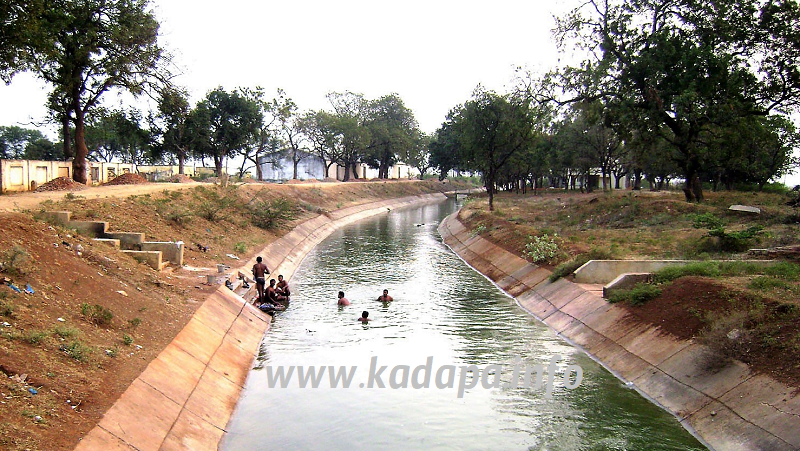
The project was first sanctioned as a famine relief work in 1897 at an estimated cost of about three and a half lakhs, and was put in hand in the year 1900 when work was needed for relief purposes. In the course of execution it was found that the provision made for some of the works was inadequate and that some additional works were necessary for the completion of the scheme, with the result that the estimate was revised and the total expenditure incurred, including indirect charges, actually amounted to nearly six lakhs. The channel was opened for irrigation in 1904 and has at present five distributaries. It is however intended to construct a sixth distributary, for which purpose land is now being acquired. The Maidukuru (Mydukur) project takes its name from the village of Maidukuru (Mydukur) the northernmost of some nine villages situated along the Cuddapah-Kurnool road which are benefited by the project. The names of these villages are Mydukur, sivapuram, Pullur, Ravulapalle, Dumapalagattu, Chemallapalle, Chennamukkapalle, Buddayapalli & Bayanapalli. The Maidukuru (Mydukur) channel takes off from the left bank of the Kurnool-Cuddapah Canal at 171 miles, 40 chaius, and the project was designed to improve this channel for a distance of a little over 3 miles extend it for length of II miles, to provide the necessary branch channels and masonry works so as to irrigate an extent of 8,000 acres in all, and in seasons of drought to supply tanks in the nine villages above mentioned. The project, originally estimated to cost about Rs. 2,30,000, was finally completed at an outlay of a little over three lakhs, and the area which it was intended to operate, namely 8,000 acres, has in fact been brought under irrigation, so that it may be regarded as a successful enterprise by British rulers.
KC Canal has been modernised during 1996-2004 at a cost of more than 2000 crore rupees.
 www.kadapa.info Voice of the YSR Kadapa District
www.kadapa.info Voice of the YSR Kadapa District
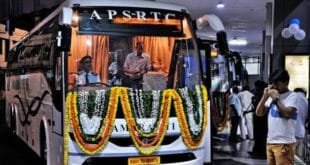
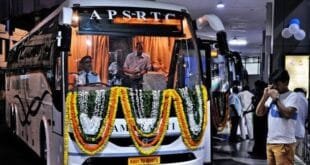
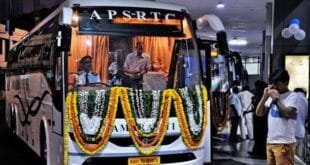
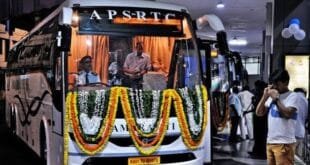
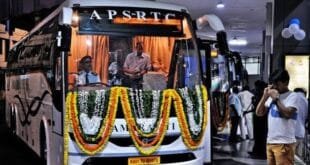
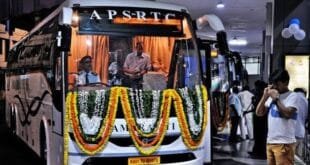
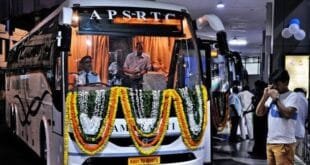
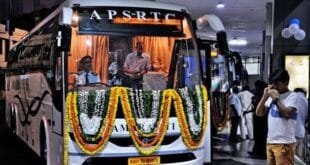
I am impressed with this site and it is good source of information to Kadapa people (across the gobe). Hamara Kadapa Mahan!!
Obsolutely the KADAPA.INFO is ultimate source of information to people come to know about KADAPA.
The “Kurnool- Cuddapah” canal is the main and major irrigation especially to Royala Seema …..its the drinking water source too for the people of some mandals.